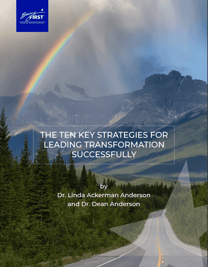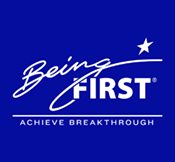If you ask any CEO or senior executive of an organization if they have a company vision, they will say yes. If you ask most employees if their company has a vision, they will also say yes. In this day and age, everyone has a vision, but most are little more than posters on a wall.
When you go a level deeper and ask, “Is your organization actively pursuing your vision? Is it alive in people’s minds daily as they make decisions? Is it the priority-setting benchmark for resource allocation?”, both leaders and those in the workforce hesitate, often responding, “No”.
This is because of a dilemma every organization faces: current operations focus on serving customers in your current routine and comfort zone, while pursuing your vision requires you to transform current operations and step into new territory that is both unknown and risky. Actively pursuing vision achievement is like driving a train while also setting out new tracks in front of the train to take you to a new destination. It is challenging.
 Your business vision denotes an outcome you have not yet achieved; a destination you have never been. You want to go there, but the demands of achieving current targets, using current operations, get in the way. Your current systems and culture, as well as your leaders’ and the workforce’s mindsets, behavior, and skills, are not yet adequate to achieve your vision. So, there is a constant trade-off between attending to customers and current operations now, or transforming to achieve the vision tomorrow.
Your business vision denotes an outcome you have not yet achieved; a destination you have never been. You want to go there, but the demands of achieving current targets, using current operations, get in the way. Your current systems and culture, as well as your leaders’ and the workforce’s mindsets, behavior, and skills, are not yet adequate to achieve your vision. So, there is a constant trade-off between attending to customers and current operations now, or transforming to achieve the vision tomorrow.
The fire-fighting required to solve today’s crisis or challenge usually wins, visionary activities don’t get their needed priority, and the vision gets relegated to simply being paper on the wall.
What Is Missing from Your Company Vision?
What is missing is the post-visioning, get real conversation, where leaders actively use their company vision and look through it to assess their current operations, culture, mindset, and behavior to see what needs to transform to achieve the vision. Imagine yourself putting your vision on as a pair of glasses, looking at your current organization, and asking a fundamental question: “What are the breakthroughs we need to achieve this vision?”
In answering that question, things get very real. Because now you are identifying very specific targets that are the milestones in the journey to realize your vision. It’s a very strategic conversation; a no BS, get real conversation that is required to honestly pursue your vision. No lip service here, just discernment that leads to pragmatic action.
The Framework for Identifying Your Required Breakthroughs
The framework for identifying the breakthroughs you need to achieve your vision has six categories:
1. What are the breakthroughs you need in business results?
Breakthroughs in business can include increased revenue, profitability, market share, innovation, customer satisfaction, etc. This list includes any business result you are out to produce as part of your long-term vision.
2. What are the breakthroughs you need in the organization?
These are transformational changes either in how your organization is structured, your business processes and systems, the technology you use, and even your business strategy.
3. What are the breakthroughs you need in the culture?
For most cultures, this is a move from command and control, where there is potentially disempowerment and lack of engagement (or inadequate engagement) of stakeholders, towards more empowerment of stakeholders, more collaboration, more trust, and more cross-boundary work effectiveness.
4. What are the breakthroughs you need in yourself and your leaders?
Leaders must lead the organization to achieve breakthrough results. To cause a real transformation, most leaders will need a breakthrough in their mindset as well as their behaviors and change leadership skills. At the level of mindset, leaders may need to expand their worldview, improve strategic thinking, and increase their ability to solve complex challenges and see and generate innovation. They must be able to see emergent possibilities and new ways of doing things and not stay stuck in old mindsets. This will require increased mindfulness and self-awareness of old thinking patterns. Often, leaders’ behavior must shift towards greater empowerment of people, more coaching, more listening, and more ability to bring people together to innovate and co-create across disciplines.
5. What are the breakthroughs you need in workforce performance?
The mindset, behavior, and skills of the workforce must often change as well. This might require sharing information to help shift people’s mindsets and their level of commitment. It might require helping them understand what is happening in the marketplace and what’s happening with customers so they can see the wisdom of pursuing breakthrough in the business. It may include up-leveling skillsets in various people, increasing decision-making at the bottom of the organization, more risk-taking, collaboration, and creative thinking.
6. What are the breakthroughs you need in change leadership capability?
All the breakthroughs in your organization require transformation. Do your leaders have the change leadership knowledge, skills, and approaches to succeed? For most organizations, it will be necessary to up-level the change leadership skills, methods, and tools of the executives and leaders, change sponsors, change project team leaders and members, and perhaps many key managers and supervisors.
From Identifying Required Breakthroughs to Developing Strategy to Achieve Them
These six areas create your breakthrough targets. Stepping back and looking at them, at the cohesive whole, you will see there are interdependencies, cross-fertilization, and integration across the categories. As the integrated map of the breakthrough targets begins to emerge, it becomes the input into your transformational change strategy. It begins to shape the initiatives and work streams that are required. It shapes how those work streams need to work as an integrated suite of changes to move your organization robustly towards your vision.
Getting this level of clarity will help you identify capacity needs and how to manage capacity so you can both continue to succeed with current operational targets while taking concrete action to achieve your vision. You will clarify which of your initiatives need to begin right out of the gate and which can or should be delayed. It will also help you see where some of the initiatives can work in tandem with each other to both increase speed and reduce the costs of transformation.
Getting Traction to Achieve Breakthrough
The nature of the get-real conversation of identifying your required breakthroughs is that it enables the leaders to get aligned about the true targets for your vision and the workstreams required to succeed. Often, vision is very lofty (as is should be). It is very future-oriented (as it should be), and, it is not specific (as it shouldn’t be). So, the translation between the vision and the transformation strategy requires getting very specific and tangible about what breakthroughs are needed “on the ground” in each of these six areas. This will enable you to develop your transformational strategy so it drives those specific breakthroughs so that your vision can be achieved.
At Being First, we use a Breakthrough Target Survey to get the conversation started among leaders as to what breakthroughs are required. It is amazing to see the level of excitement and passion that often arises as leaders “get real” about working together to achieve their vision.
Watch the related video:
What Is Transformation?
Dr. Linda Ackerman Anderson and Dr. Dean Anderson discuss what transformation is and explore the critical areas of a transformation strategy that ensure success.
 Download the related eBook:
Download the related eBook:
The Ten Key Strategies for Leading Transformation Successfully
Through 40 years of observing and supporting large-scale change and transformation in Fortune 500, government, global NGOs and public service organizations, we've identified these ten Best Practice strategies that provide a systematic approach to consciously leading people through the complexities of transformation.
Please complete the form to download your eBook:
Watch the related webinar:
How to Build Leadership Commitment to Transformation
In this on-demand workshop, you'll learn how to ask for, generate and nurture leadership commitment. The answer is not what you think, but it will radically improve your ability to get leaders committed. Developing this skill is one of the ten key strategies for ensuring success in any organization's transformation.

